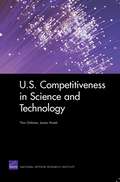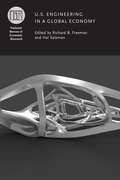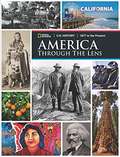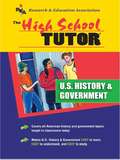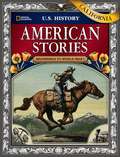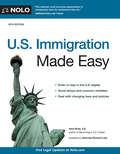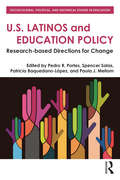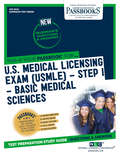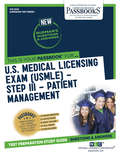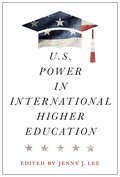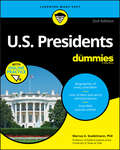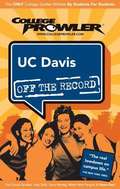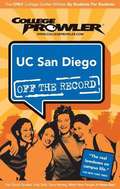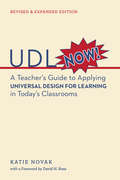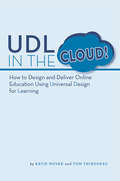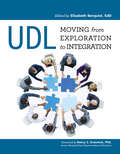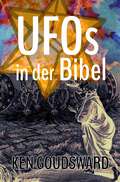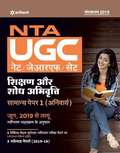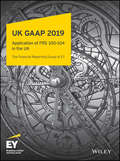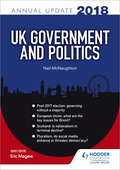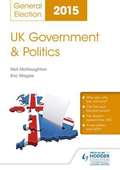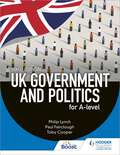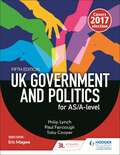- Table View
- List View
U.S. Competitiveness in Science and Technology
by James Hosek Titus GalamaIs the United States in danger of losing its competitive edge in science and technology? This volume reviews the arguments surrounding this issue and contrasts them with relevant data, including trends in research and development investment; information on the size, composition, and pay of the U.S. science and engineering workforce; and domestic and international education statistics. The authors conclude with recommendations for policymakers.
U.S. Engineering in a Global Economy (National Bureau of Economic Research Conference Report)
by Richard B. Freeman Hal SalzmanSince the late 1950s, the engineering job market in the United States has been fraught with fears of a shortage of engineering skill and talent. U.S. Engineering in a Global Economy brings clarity to issues of supply and demand in this important market. Following a general overview of engineering-labor market trends, the volume examines the educational pathways of undergraduate engineers and their entry into the labor market, the impact of engineers working in firms on productivity and innovation, and different dimensions of the changing engineering labor market, from licensing to changes in demand and guest worker programs. The volume provides insights on engineering education, practice, and careers that can inform educational institutions, funding agencies, and policy makers about the challenges facing the United States in developing its engineering workforce in the global economy.
U.S. History 1877 to the Present: America Through the Lens
by National Geographic LearningThis book helps readers use a variety of maps and documents to interpret human movement, including major patterns of domestic and international migration, changing environmental preferences and settlement patterns, the frictions that develop between population groups, and the diffusion of ideas, technological innovations, and goods.
U.S. History and Government Tutor (High School Tutors Study Guides)
by Editors of REA Gary LandHelp for high school studies is here with REA's High School Tutor series! Each High School Tutor book makes it easy to learn difficult subjects. The High School Tutor for U.S. History and Government covers every American history and government topic taught in classrooms today including Pre-Colonization to modern America, the branches of the federal government, Supreme Court decisions, and more. In easy-to-follow, student-friendly language, students are tutored intelligently about U.S. history & government making the subject easy to learn, easy to understand, and easy to study. DETAILS - An essential companion to any high school textbook - Superb study guide for quizzes, tests and exams - An excellent aid when working on homework - Helps students grasp and understand U.S. History and Government more fully - Indexed for easy topic searches
U.S. History: American Stories, Beginnings to World War I
by Fredrik Hiebert Peggy Altoff Fritz FischerNIMAC-sourced textbook
U.S. Immigration Made Easy
by Ilona BrayWant to live, work, or travel in the United States? U.S. Immigration Made Easy has helped tens of thousands of people get a visa, green card, or other immigration status. You’ll learn: whether you and your family qualify for a short-term visa, permanent U.S. residence, or protection from deportation how to obtain, fill out, and submit the necessary forms and documents insider tips on dealing with bureaucratic officials, delays, and denials strategies for overcoming low income and other immigration barriers, and how to select the right attorney. U.S. Immigration Made Easy provides detailed descriptions of application processes and helps you avoid traps that might destroy your chances. There’s also an immigration eligibility self-quiz, which helps you match your background and skills to a likely category of visa or green card. The 19th edition is completely updated to cover recent legal and fee changes including Trump administration efforts to end TPS for various countries and end DACA. NOTE: Does not cover naturalization.
U.S. Latinos and Education Policy: Research-Based Directions for Change (Sociocultural, Political, and Historical Studies in Education)
by Pedro R. Portes Spencer Salas Patricia Baquedano-López Paula J. MellomWith the American dream progressively elusive for and exclusive of Latinos, there is an urgent need for empirically and conceptually based macro-level policy solutions for Latino education. Going beyond just exposing educational inequalities, this volume provides intelligent and pragmatic research-based policy directions and tools for change for U.S. Latino Education and other multicultural contexts. U.S. Latinos and Education Policy is organized round three themes: education as both product and process of social and historical events and practices; the experiences of young immigrants in schools in both U.S. and international settings and policy approaches to address their needs; and situated perspectives on learning among immigrant students across school, home, and community. With contributions from leading scholars, including Luis Moll, Eugene E. Garcia, Richard P. Durán, Sonia Nieto , Angela Valenzuela, Alejandro Portes and Barbara Flores, this volume enhances existing discussions by showcasing how researchers working both within and in collaboration with Latino communities have employed multiple analytic frameworks; illustrating how current scholarship and culturally oriented theory can serve equity-oriented practice; and, focusing attention on ethnicity in context and in relation to the interaction of developmental and cultural factors. The theoretical and methodological perspectives integrate praxis research from multiple disciplines and apply this research directly to policy.
U.S. MEDICAL LICENSING EXAM: Passbooks Study Guide (Admission Test Series)
by National Learning CorporationThe Admission Test Series prepares students for entrance examinations into college, graduate and professional school as well as candidates for professional certification and licensure. The U.S. Medical Licensing Examination, Step I – Basic Medical Sciences Passbook® prepares you by sharpening the skills and abilities necessary to succeed on your upcoming entrance exam. It provides hundreds of questions and answers in the areas that will likely be covered on your upcoming exam, including but not limited to: anatomy; pathology; pharmacology; biochemistry; microbiology; and more.
U.S. MEDICAL LICENSING EXAM: Passbooks Study Guide (Admission Test Series)
by National Learning CorporationThe Admission Test Series prepares students for entrance examinations into college, graduate and professional school as well as candidates for professional certification and licensure. The U.S. Medical Licensing Examination, Step III – Patient Management Passbook® prepares you by sharpening the skills and abilities necessary to succeed on your upcoming entrance exam. It provides hundreds of questions and answers in the areas that will likely be covered on your upcoming exam, including but not limited to: clinical science; initial care; emergency care; patient history; concepts and mechanisms of disease; and more.
U.S. Power in International Higher Education
by Roopa Desai Trilokekar Ellen Hazelkorn Brendan Cantwell Jenny J. Lee Gerardo L. Blanco John P. Haupt Chrystal A. Mwangi Sean Jung-Hau Chen Pempho Chinkondenji Dale LaFleur Christina W. Yao Chris R. Glass Sharon Stein Santiago Castiello-GutiérrezU.S. Power in International Higher Education explores how internationalization in higher education is not just an educational endeavor, but also a geopolitical one. By centering and making explicit the role of power, the book demonstrates the United States’s advantage in international education as well as the changing geopolitical realities that will shape the field in the future. The chapter authors are leading critical scholars of international higher education, with diverse scholarly ties and professional experiences within the country and abroad. Taken together, the chapters provide broad trends as well as in-depth accounts about how power is evident across a range of key international activities. This book is intended for higher education scholars and practitioners with the aim of raising greater awareness on the unequal power dynamics in internationalization activities and for the purposes of promoting more just practices in higher education globally.
U.S. Presidents For Dummies with Online Practice
by Marcus A. StadelmannDiscover how the Oval Office’s occupants have made and make history Which one was the tallest? Which one fought a duel? Which had liquor smuggled into the White House during Prohibition? And why is the president even called the president in the first place? From periwigs and knee breeches to the 24-hour news cycle and presidential Tweets, the fascinating and colorful stories of the 45 incumbents are a powerful lens through which to view U.S. history and get insight into the present. Taking readers on a fact-filled journey through two centuries, this book examines how each individual obtained their dream (or nightmare) position, what they stood for (or against), achieved (or didn’t), and how their actions affected the country—for better or worse. And—remembering that presidents are people too—it shows how the personal really can be political, exploring how each president’s vision, strengths, and foibles helped or hindered them in building the country and their own legacy. Accessible biographies of all presidents Sidebars, timelines, and photos Lists of best and worst administrations Bonus online content, including quizzes galore to help build retention Whether you’re a student, a history buff—or are even interested in becoming president yourself one day—U. S. Presidents For Dummies is the perfect guide to what it takes to be leader of the free world, who has stepped up to that challenge, and how those personal histories can help us understand yesterday’s, today’s, and even tomorrow’s union.
UC Davis (College Prowler)
by Tristen ChangNo university affiliations. No half-truths. No out-of-touch authors who haven't been in school for decades. A class project turned company, College Prowler produces guidebooks that are written by actual college students and cover the things students really want to know. Unlike other guides that jam everything into a five-pound book and devote only two pages to each college, our single-school guidebooks give students only the schools they want and all the information they need. From academics and diversity to nightlife and sports, we let the students tell it how it is. In addition to editorial reviews and grades for 20 different topics, more than 80 percent of each guide is composed of actual student reviews of their school. Whether readers are looking for "Best and Worst" lists, "Did You Knows?" or traditions, College Prowler guides have it all. Our books are the only place for local slang, urban legends, and tips on the best places to find a date, study, or grab a bite to eat.
UC San Diego (College Prowler)
by Shelby GundermanNo university affiliations. No half-truths. No out-of-touch authors who haven't been in school for decades. A class project turned company, College Prowler produces guidebooks that are written by actual college students and cover the things students really want to know. Unlike other guides that jam everything into a five-pound book and devote only two pages to each college, our single-school guidebooks give students only the schools they want and all the information they need. From academics and diversity to nightlife and sports, we let the students tell it how it is. In addition to editorial reviews and grades for 20 different topics, more than 80 percent of each guide is composed of actual student reviews of their school. Whether readers are looking for "Best and Worst" lists, "Did You Knows?" or traditions, College Prowler guides have it all. Our books are the only place for local slang, urban legends, and tips on the best places to find a date, study, or grab a bite to eat.
UDL Now!: A Teacher's Guide to Applying Universal Design for Learning in Today's Classrooms
by David Rose Katie NovakIn this revised and expanded edition of UDL Now! Katie Novak provides practical insights and savvy strategies for helping all learners meet high standards using the principles of Universal Design for Learning (UDL). UDL is a framework for inclusive education that aims to lower barriers to learning and optimize each individual's opportunity to learn. Novak shows how to use the UDL Guidelines to plan lessons, choose materials, assess learning, and improve instructional practice. Novak discusses key concepts such as scaffolding, vocabulary-building, and using student feedback to inform instruction. She also provides tips on recruiting students as partners in the teaching process, engaging their interest in how they learn. UDL Now! is a fun and effective Monday-morning playbook for great teaching.
UDL in the Cloud!: How to Design and Deliver Online Education Using Universal Design for Learning
by Katie Novak Tom ThibodeauUDL in the Cloud helps educators design and deliver more accessible, engaging, and effective online learning experiences. Drawing on years of experience in K-12 and postsecondary settings, authors Katie Novak and Tom Thibodeau offer a highly practical approach to developing e-courses, virtual snow days, flipped classes, and blended learning experiences that meet the needs of diverse learners.
UDL: Moving from Exploration to Integration
by Elizabeth Berquist Nancy S GrasmickThis is the first book to consider scaled-up implementation of Universal Design for Learning in schools, districts, and even states. In this collections of case stories, veteran educators and administrators share their stories, tips, and lessons learned from implementing UDL in a variety of settings. Elizabeth Berquist, a leading voice in the burgeoning UDL field, edits and contributes to the collection. In addition to specific strategies for scaling up UDL, the book provides ideas for improving teacher professional development and classroom practice.
UFOs in der Bibel: UFOs in der Bibel
by Ken GoudswardUralte Wahrheiten, die seit Tausenden von Jahren vor aller Augen verborgen sind. Im Jahr 1968 brach Erich von Däniken eine Tür auf, durch die Millionen von Neugierigen mit Verwunderung und möglicherweise auch etwas Fassungslosigkeit geschaut haben. Jetzt, auf den Schultern dieses Riesen stehend, wird die Tür von Ken Goudsward in dieser erstaunlichen neuen Untersuchung der Heiligen Schrift weit aufgestoßen, wobei er eine beispiellose hebräische Exegese nutzt, um nicht weniger als 30 außerirdische Begegnungen auf den Seiten des meistverkauften Buches aller Zeiten zu enthüllen. In einer Zeit des Scheidewegs zwischen Enthüllung und Verschwörung war die Bibel noch nie so relevant wie heute.
UGC NET JRF SLET - General Paper 1 - Shikshan Aur Shodh Abhivrutti: यू.जी.सी नेट/जेआर एफ/सेट - सामन्य पेपर 1 - शिक्षण और शोध अभिवृत्ती
by Arihant Limitedशिक्षण और शोध अभिवृत्ती सामन्य पेपर 1 अरिहन्त पब्लिकेशन्स (इण्डिया) लिमिटेड ने पुस्तक हिंदी भाषा में प्रकाशित किया गया है, इस पाठ्यक्रम के अनुसार 10 इकाइयों (शिक्षण अभिवृत्ति, शोध अभिवृत्ति, बोध, सम्प्रेषण, गणितीय तर्क और अभिवृत्ति, युक्तियुक्त तर्क, आँकड़ों की व्याख्या, सूचना एवं संचार प्रौद्योगिकी, लोग, विकास एवं पर्यावरण तथा उच्च शिक्षा प्रणाली) में विवरण की व्याख्या की गई है । पुस्तक में विद्यार्थियों को समझाने के लिए सरल भाषा के साथ जगह-जगहें पर उदाहरण, फ्लोचार्ट, चित्र, एवं नवीन तथ्यों इत्यादि का समावेश किया गया है तथा वर्ष 2018 (दिसम्बर और जुलाई) के हल प्रश्न-पत्रों को विस्तृत व्याख्या के साथ दिया गया है।
UK GAAP 2019: Generally Accepted Accounting Practice under UK and Irish GAAP
by Ernst & Young LLPUK GAAP 2019 provides a comprehensive guide to interpreting and implementing UK accounting standards, particularly: FRS 100: Application of Financial Reporting Requirements FRS 101: Reduced Disclosure Framework — Disclosure exemptions from EU-adopted IFRS for qualifying entities FRS 102: The Financial Reporting Standard applicable in the UK and Republic of Ireland FRS 103: Insurance Contracts FRS 104: Interim Financial Reporting This book is an essential tool for anyone applying, auditing, interpreting, regulating, studying or teaching those accounting standards. Written by the financial reporting professionals from the Financial Reporting Group of EY, this book provides a clear explanation of the UK GAAP accounting requirements which apply in 2019 and will prove invaluable in implementing these requirements. It also addresses the requirements of the UK Companies Act and relevant statutory instruments, as well as practical worked examples. Also available is International GAAP® 2019 — a three volume comprehensive guide to interpreting International Financial Reporting Standards (IFRS), setting IFRS in a relevant business context and providing insight into how complex practical issues should be resolved in the real world of global financial reporting.
UK Government & Politics Annual Update 2018
by Neil McNaughtonTopical reading essential for exam success.- Review all the key developments in UK politics from the last year, with expert analysis you can draw on both throughout your course and in the exams- Go beyond your textbooks to build a bank of up-to-date examples and data, helping you develop knowledgeable and persuasive arguments- Know how to hit the highest grades with guidance from experienced teachers and authors, Neil McNaughton and Eric MageeContentsChapter 1: The 2017 general election: an earthquake or just a tremor?Chapter 2: After the 2017 general election: governing without a majorityChapter 3: City and regional mayors: how much power do they really have?Chapter 4: The Central Executive: what happened to collective responsibility?Chapter 5: Pluralism: Does social media enhance or threaten democracy?Chapter 6: The Supreme Court: is it too powerful?Chapter 7: Pressure groups: three contemporary case studies (the Fawcett Society, the Taxpayers' Alliance, UK Finance)Chapter 8: Time for a British Bill of Rights?Chapter 9: European Union: what are the key issues for Brexit?Chapter 10: Scotland: is nationalism in terminal decline?
UK Government & Politics: General Election 2015
by Eric Magee Neil McnaughtonFull coverage and analysis of possibly the most significant, and certainly most interesting, election in modern times.Written by an experienced teacher and examiner, and edited by an acknowledged expert in the field of UK politics, this update provides you with topical material to draw on for tasks throughout your course, and for answering examination questions.- Examines the parties' election campaigns, manifestos and policies - Reviews and explains the results, as well as looking at the task ahead for the new government- The perfect update for your textbook, bringing you right up to date with all the topical material you need to achieve your best in your examsTopics covered:- a comparison of the party manifestos- the impact of the televised debates- the result: who won, who lost, and why- the formation of the new government- the emerging new party system- whether the first-past-the-post electoral system can survive- how the result will affect the devolution debate- where now for UK politics?toral system can survive - how the result will affect the devolution debate - where now for UK politics?
UK Government and Politics for A-level Sixth Edition
by Eric Magee Paul Fairclough Philip Lynch Toby Cooper- Comprehensive coverage and analysis of relevant political developments helps develop students' knowledge and key skills-Up-to-date examples, case studies and debate feature will improve students' grasp of contemporary developments in UK politics-Includes more synoptic links to help students understand how different topics within the A-level link together -Includes quickfire knowledge-check questions and summaries of key content to help consolidate knowledge and understanding -Features exam-style questions throughout, helping students improve their analysis and evaluation skills-Provides answer guidance for exam-style questions online at www.hoddereducation.co.uk/xxx
UK Government and Politics for A-level Sixth Edition
by Eric Magee Paul Fairclough Philip Lynch Toby Cooper- Comprehensive coverage and analysis of relevant political developments helps develop students' knowledge and key skills-Up-to-date examples, case studies and debate feature will improve students' grasp of contemporary developments in UK politics-Includes more synoptic links to help students understand how different topics within the A-level link together -Includes quickfire knowledge-check questions and summaries of key content to help consolidate knowledge and understanding -Features exam-style questions throughout, helping students improve their analysis and evaluation skills-Provides answer guidance for exam-style questions online at www.hoddereducation.co.uk/xxx
UK Government and Politics for AS/A-level (Fifth Edition)
by Paul Fairclough Philip Lynch Toby CooperDownload a pre-election eInspection copy today, to start your lesson planning for September 2017.Inspire political thinking with our bestselling politics textbook, fully updated the new 2017 specifications. Help students get their best grade with political commentary and analysis; the final edition of the book will include coverage of the June 2017 general election results.Covering key topics for all exam boards, this textbook puts politics in context with topical analysis of politics today and how UK governmental and political history shaped current events and thinking.- Extend knowledge and improve key skills with comprehensive coverage and analysis of relevant political developments, including possible consequences of Brexit, such as its effect on Scottish independence- Understand how different topics within the A-level link together with the new Synoptic Links feature- Develop key analysis and evaluation skills with activities and case studies throughout the textbook - look out for Debate, Case Study and Activity boxes- Clarify knowledge and understanding of political language with summaries and explanations of key terms- Test and develop understanding of key topics with exam focus sections tailored to the new Politics specifications
UK Government and Politics for AS/A-level (Fifth Edition)
by Paul Fairclough Philip Lynch Toby CooperExam Board: AQA, Edexcel, OCR & WJECLevel: A-levelSubject: PoliticsFirst Teaching: September 2017First Exam: June 2018Inspire political thinking with our bestselling politics textbook and help students get their best grade with political commentary and analysis; , fully updated the new 2017 specifications and including coverage of the June 2017 general election results.Covering key topics for all exam boards, this textbook puts politics in context with topical analysis of politics today and how UK governmental and political history shaped current events and thinking.- Extend knowledge and improve key skills with comprehensive coverage and analysis of relevant political developments, including the 2017 snap election, possible consequences of Brexit, and its effect on Scottish independence- Understand how different topics within the A-level link together with the new Synoptic Links feature- Develop key analysis and evaluation skills with activities and case studies throughout the textbook - look out for Debate, Case Study and Activity boxes- Clarify knowledge and understanding of political language with summaries and explanations of key terms- Test and develop understanding of key topics with exam focus sections tailored to the new Politics specifications
